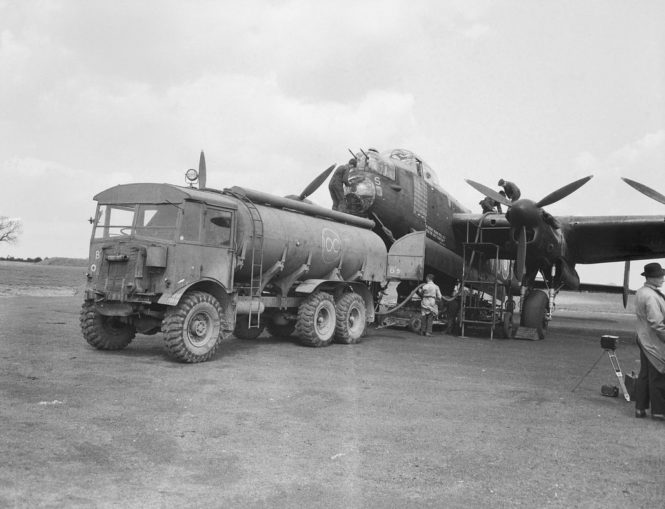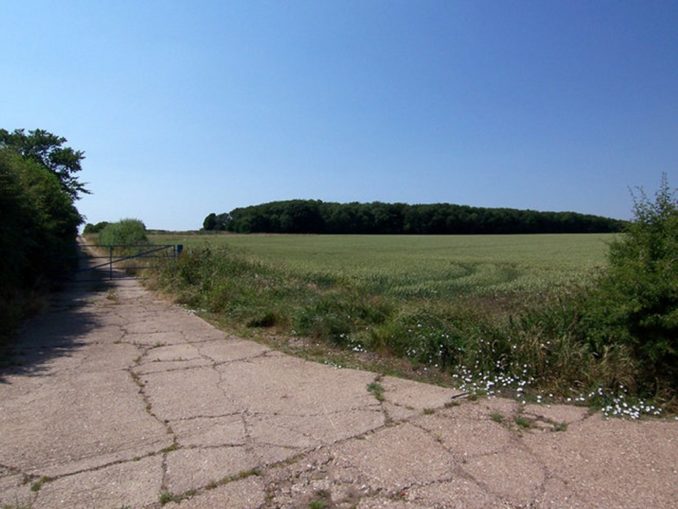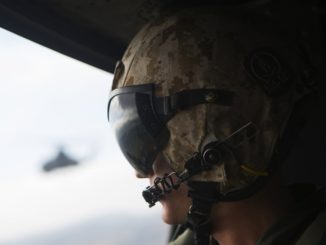Pre-Op Test Flights and Briefings

Royal Air Force official photographer, Public domain, via Wikimedia Commons
On the morning of 13th February it was cold with rain in the Lincolnshire Wolds, after an extremely cold January with a mean temperature of -2 degrees Celsius. By the second week in February the temperature was +4 degrees, although there were still snow flurries in the wind. The aircrews of Bomber Command discussed the probability of Ops over breakfast and there was a general agreement that tonight they would be “on.” From the dining rooms they made their way to the ante-rooms to try and bag the morning copy of the Daily Mirror, not for any insightful journalism but to see how little Jane was wearing and how much she managed to lose in the cartoon strip.
They stretched from the airfields of No 6 Group, mainly Canadian Squadrons flying Halifaxes from Yorkshire, down through Lincolnshire, home of No 5 and 6 Group Lancasters, with some Australian squadrons, into East Anglia and No 8 Pathfinder Group flying Lancasters and Mosquitos. The crews made their way to the Flight Offices to see if they were on the Ops roster. Most of them would be and the activity out on the dispersals confirmed that the aircraft would be fuelled and bombed up that afternoon. Each crew was an entity, a band of brothers who generally started their tours together. They hated flying with a “spare bod” if any of the crew were sick, so they often flew feeling unwell, bearing the high altitude agony of toothache or a head cold.
Some of the bomber stations such as Waddington, Scampton and Hemswell were purpose built bases, commissioned before the start of the war. They had good facilities and large, comfortable messes and sports gymnasiums. Others were a miserable collective of Nissen and Romney huts in the desolate and windswept areas of the East of England. Ludford Magna at a height of 430 feet in the Wolds, home of No 101 Squadron was notoriously miserable and open to the elements, christened “Mudford Magna” by the unfortunates who had to live there.

David Wright / Looking towards Harpgates Plantation
The materials needed for building runways suitable for heavy bombers were approximately 18,000 tons of dry cement and 90,000 tons of aggregate. Expected stress factors of 2,000 pounds per square inch led to runway thicknesses of six to nine inches of concrete slab laid on a hardcore base, covered with a layer of asphalt. In areas where there was no natural rock, such as East Anglia, stone had to be imported for the hardcore. Up to six trains ran daily from London to East Anglia carrying rubble from destroyed buildings in Luftwaffe raids. This material was used as hardcore for the airfields.
A typical bomber airfield was home to around 2,500 men and women and the only reason for its existence was to service, equip and arm the usual operational complement of eighteen bombers plus two or three spare airframes to cover unserviceability. There would be in the region of one-hundred and fifty operational aircrew allocated to three Flights, usually A, B and C Flights, although the larger airfields operated two squadrons. Most of the aircrews were sergeants. Each airfield had would have three hangars for second line servicing, however, most of the servicing was carried out on the dispersals, regardless of the weather and accidents were common. On a “maximum effort” operation each squadron was to have every serviceable aircraft and trained crews on the order of battle (ORBAT).
If they were on the Ops roster, the pilots would round up the rest of the crew for the air test. Even though it would be a short flight in the local area, the gunners wore their Taylor suits to check the electrical power in their turrets. A host of aircraft systems would be checked by the flight engineer, from engine revs, oil temperature and pressures to fuel transfer cocks and the hydraulic system, while the navigator checked his instruments and the operation of the H2S downward looking radar. The wireless operators would send a test message, usually Burt’s best bent wire tacks, because of the Morse’s pleasing jazz rhythm. Across in Holland, German listening stations would count the number of transmissions and ascertain that a large raid would be conducted that night. This information was passed to the German flak and night fighter defences, who in turn would conduct their own daily air and radar tests.
On landing, the last minute problems were passed to the Ground Crew Chief, usually a Flight Sergeant in charge of the servicing of each bomber. He would be in charge of around thirty airframe riggers, propulsion fitters (sooties), armourers (plumbers) and air electronics technicians (fairies). And then there were the WAAFs who drove the bomb tractors, petrol bowsers and crew busses. The aircrew hoped that any last minute problems could be rectified to avoid having to take the spare aircraft, unfamiliar and often worn out, truly a bad omen for that trip.
Briefing
By the early evening of 13th February 1945, the crews of Bomber Command on operations that night were finishing their pre-flight meals. These meals were special because they included a rare wartime treat, fresh eggs almost always fried in a bay marie in a thick, lard that resembled sump oil. There would sausages, tinned tomatoes and baked beans, despite the beans causing painful abdominal wind at high altitude in unpressurised aircraft. After the meals and a cup of tea, the crews would file towards the briefing rooms with trepidation. Where was the target? Berlin and the Ruhr, invariably hated because of the rings of flak that surrounded the targets. But by now the factories of the Ruhr were a wasteland of rubble.
Bomber Command had evolved significantly since 1943 and the focus of power had moved to No 5 Group, away from AVM Bennet’s No 8 Pathfinder Group. By the end of the Second World War, the Group had grown to 15 squadrons. During the war, it included a significant proportion of Royal Australian Air Force (or Australian-born RAF) personnel, both aircrews and ground staff, who were concentrated in three “Article XV squadrons”: No. 455 Squadron RAAF, No. 463 Squadron RAAF and No. 467 Squadron RAAF. The Group also famously included an elite, multi-national unit: No. 617 Squadron, perhaps better known as “The Dambusters”. 617 Squadron was formed in March 1943, and comprised RAF, RAAF, RCAF/Canadian and RNZAF/New Zealand aircrew personnel, who had been hand-picked from squadrons throughout Bomber Command.
AVM Ralph Cochrane, who was to become influential in terms of Bomber Command tactics, took command of 5 Group in October 1943. Group HQ was moved to Morton Hall, at RAF Swinderby in November 1943. Using the Stabilizing Automatic Bomb Sight (SABS) and the 12,000 lb Tallboy, 617 Sqn achieved a bombing error of only 94 yards at the V Weapon launch site at Abbeville, during December 1943. The special missions included attacks on the German battleship Tirpitz in late 1944 and the use of the Grand Slam against the strategically-important Bielefeld railway viaduct, in March 1945.
During the lead-up to D-day, Cochrane was an advocate of low-level marking, to improve accuracy, and lobbied heavily to be allowed to prove the principle operationally. New systems of target-marking were developed as result and were tested by 617 Squadron – especially its commanding officer, Wing Commander Leonard Cheshire, using the de Havilland Mosquito and North American Mustang. (Cheshire was subsequently awarded the Victoria Cross and taken off active operations.)
With a sense of theatre, the maps were uncovered and for the first time the crews would be told of their target. They followed the ribbon to a point in Germany, across the North Sea, across France, past Stuttgart, Frankfurt and Mannheim, further and further east to Dresden. None of the crews were aware if Dresden had been attacked at all, but they knew it was a long trip, nine hours in the air. The gunners were concerned because it was such a long time to maintain alertness, scanning the night skies. A mistake or lack of concentration could mean the loss of the aircraft or a “hosing out” for the gunners, the washing out of the turrets of all that was left of them.
The crews were warned that the city was defended with a significant number of anti-aircraft guns and a squadron of Messerschmitt fighters based at Klotzsche airfield. However, the guns had been moved to the east and for whatever reason, the fighters remained on the ground. Even many of Dresden’s fire and rescue personnel had been moved west to the Ruhr and cities such as Hamburg. The Germans had left Dresden virtually undefended. There was uneasiness among some of the crews that the briefing specifically mentioned refugees and that they were to be targeted. The men of Bomber Command were never naive enough not to know their bombs and incendiaries killed civilians, but the targets were always briefed as railway yards, a factory or transportation, never the targeting of refugees.
There was a different form of consternation among the Poles who flew with Bomber Command. When Polish crews of the designated squadrons were preparing for the mission, the terms of the Yalta agreement were made known to them. There was a huge uproar, since the Yalta agreement handed parts of Poland over to the Soviet Union. There was talk of mutiny among the Polish pilots, and their British officers removed their side arms. The Polish Government ordered the pilots to follow their orders and fly their missions over Dresden, which they did, despite the shameful act of betrayal.
The Dresden attack was to have begun with a USAAF Eighth Air Force bombing raid on 13 February 1945. The Eighth Air Force had already bombed the railway yards near the centre of the city twice in daytime raids: once on 7 October 1944 with 70 tons of high-explosive bombs killing more than 400, then again with 133 bombers on 16 January 1945, dropping 279 tons of high-explosives and 41 tons of incendiaries.
On 13 February 1945, bad weather over Europe prevented any USAAF operations, and it was left to RAF Bomber Command to carry out the first raid. It had been decided that the raid would be a double strike, in which a second wave of bombers would attack three hours after the first, just as the rescue teams were trying to put out the fires. Other raids were carried out that night to confuse German air defences. Three hundred and sixty heavy bombers (Lancasters and Halifaxes) bombed a synthetic oil plant in Böhlen, 60 miles from Dresden, while de Havilland Mosquito medium bombers attacked Magdeburg, Bonn, Misburg near Hanover and Nuremberg.
Pre-flight and the Departure of the First Wave
Because it was such a long flight, the crews didn’t have long to wait after the briefing. They went to their crew rooms and sanitised – removing any material that would help enemy intelligence, personal letters, and theatre or cinema tickets. They dressed carefully because they would be in the air a long time, the gunners paying close attention to their electrically heated Taylor suits. Then the crews got on buses and lorries for the trip out to the dispersals where their Lancasters waited for them. They got on board for a last check of the aircrafts’ systems, the pilots running up the engines until they reached the correct operating temperature and oil pressure. Then it was off the aircraft for a last piss in the open air before re-embarking and the Lancasters being re-started and moving out onto the narrow taxi way. There were no lights on the tax way and it was not unknown for the heavy aircraft to miss the edges of the track and become bogged down, much to the consternation of the aircraft and crews following.
In turn each bomber would line up on the runway, run up the power and release the brakes. The pilot would keep the aircraft straight on the runway as he advanced the throttles, the flight engineer moving his hand in behind the skipper to take over the throttles. A fully laden bomber would take most of the runway to rotate, the pilot keeping the aircraft in a gentle climb, while the undercarriage retracted and building up speed. Then it would be the long climb to the rendezvous point on the coast, then across the sea to France and Germany.
The first of the British aircraft took off at around 17:20 hours for the 700-mile journey. This was a group of Lancasters from Bomber Command’s 83 Squadron, No. 5 Group, acting as the Pathfinders, or flare force, whose job it was to find Dresden and drop magnesium parachute flares, known to the Germans as “Christmas trees”, to light up the area for the bombers. The next set of aircraft to leave England were twin-engined Mosquito marker planes, which would identify target areas and drop 1,000-pound target indicators (TIs)” that created a red glow for the bombers to aim at. The attack was to centre on the Ostragehege sports stadium, next to the city’s medieval Altstadt (old town), with its congested and highly combustible timbered buildings.
The main bomber force, called Plate Rack, took off shortly after the Pathfinders. This group of 254 Lancasters carried 500 tons of high explosives and 375 tons of incendiaries. There were 200,000 incendiaries in all, with the high-explosive bombs ranging in weight from 500 to 4,000 lb —the two-ton cookies, also known by the press as “blockbusters”, because they could destroy an entire large building or street. The high explosives were intended to rupture water mains and blow off roofs, doors, and windows to create an air flow to feed the fires caused by the incendiaries that followed.
The Lancasters crossed into French airspace near the Somme, then into Germany just north of Cologne. At 22:00 hours, the force heading for Böhlen split away from Plate Rack, which turned south east toward the Elbe. By this time, ten of the Lancasters returned to base with unserviceability issues, called boomerangs, leaving 244 to continue to Dresden.
© Blown Periphery 2021
The Goodnight Vienna Audio file



